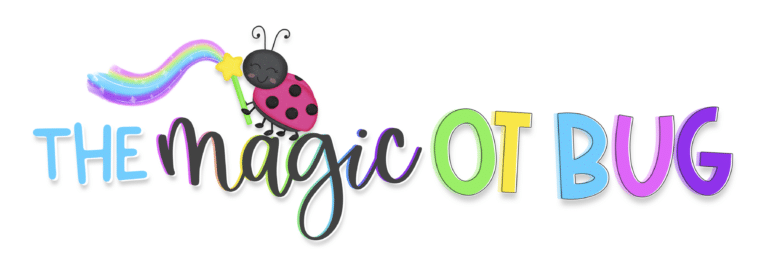As pediatric occupational therapists, providing children with sensory issues with the right tools to help regulate their sensory experiences is crucial. Here are various sensory tools that can be beneficial:

- Weighted Blankets:
- Deep Pressure Stimulation: Weighted blankets offer gentle, evenly distributed pressure, which can help calm the nervous system and promote relaxation. They are especially beneficial for children who seek proprioceptive input or struggle with anxiety and sensory overload.
- Compression Clothing:
- Consistent Pressure: Compression clothing, such as snug-fitting shirts or vests, provides a comforting and supportive hug-like sensation. This gentle pressure can help children feel grounded and secure, reducing anxiety and promoting focus and attention.
- Fidget Toys:
- Redirecting Excess Energy: Fidget toys, such as stress balls, sensory rings, or squishy toys, offer tactile and proprioceptive input that help children channel excess energy or nervousness into constructive fidgeting, improving focus and concentration during tasks.
- Chewable Jewelry:
- Oral Sensory Input: Chewable jewelry, like necklaces or bracelets designed for chewing, provides a safe and socially acceptable outlet for oral sensory-seeking behaviors. It can help reduce oral fixation, decrease anxiety, and improve self-regulation.
- Therapeutic Swings:
- Calming Motion: Therapeutic swings, such as platform swings or cocoon swings, provide rhythmic and repetitive swinging motions and have a calming effect on the nervous system. They promote vestibular stimulation, proprioceptive input, and relaxation.
- Tactile Mats or Brushes:
- Textural Stimulation: Tactile mats or brushes offer various textures for tactile exploration and desensitization. They can be used to desensitize hypersensitive body areas, improve tactile discrimination, and promote tactile tolerance.
- Sensory Balls:
- Tactile and Proprioceptive Engagement: Sensory balls of different sizes, textures, and densities engage tactile and proprioceptive senses. They can be squeezed, rolled, or bounced to provide sensory input, improve hand-eye coordination, and promote gross motor skills.
- Noise-Canceling Headphones:
- Reducing Auditory Sensitivities: Noise-canceling headphones help children reduce auditory sensitivities by minimizing background noise and providing a quieter environment. They are beneficial for children who are hypersensitive to loud sounds or have auditory processing difficulties.

- Sensory-friendly Spaces:
- Calming Environments: Designated sensory-friendly spaces, equipped with comfortable seating, soft lighting, and sensory tools, offer children a safe and calming environment to self-regulate and decompress when feeling overwhelmed or overstimulated. A pop-up tent in the therapy room or classroom is comforting for children with anxiety to relax.
- Bouncing or Stability Balls:
- Promoting Balance and Body Awareness: Yoga balls provide dynamic seating options that promote core strength, balance, and postural control. Sit and Move cushions also provide feedback for kids who crave proprioceptive input. Both encourage active sitting, improve attention and focus, and offer sensory input through gentle bouncing or rocking motions.
Remember, individual preferences vary, so it’s essential to consult with a professional, such as an occupational therapist or sensory integration specialist, to determine the most suitable sensory tools and strategies for each child’s unique needs and sensory profile. By providing children with the right tools and support, we can help them thrive and participate fully in daily activities and routines.



